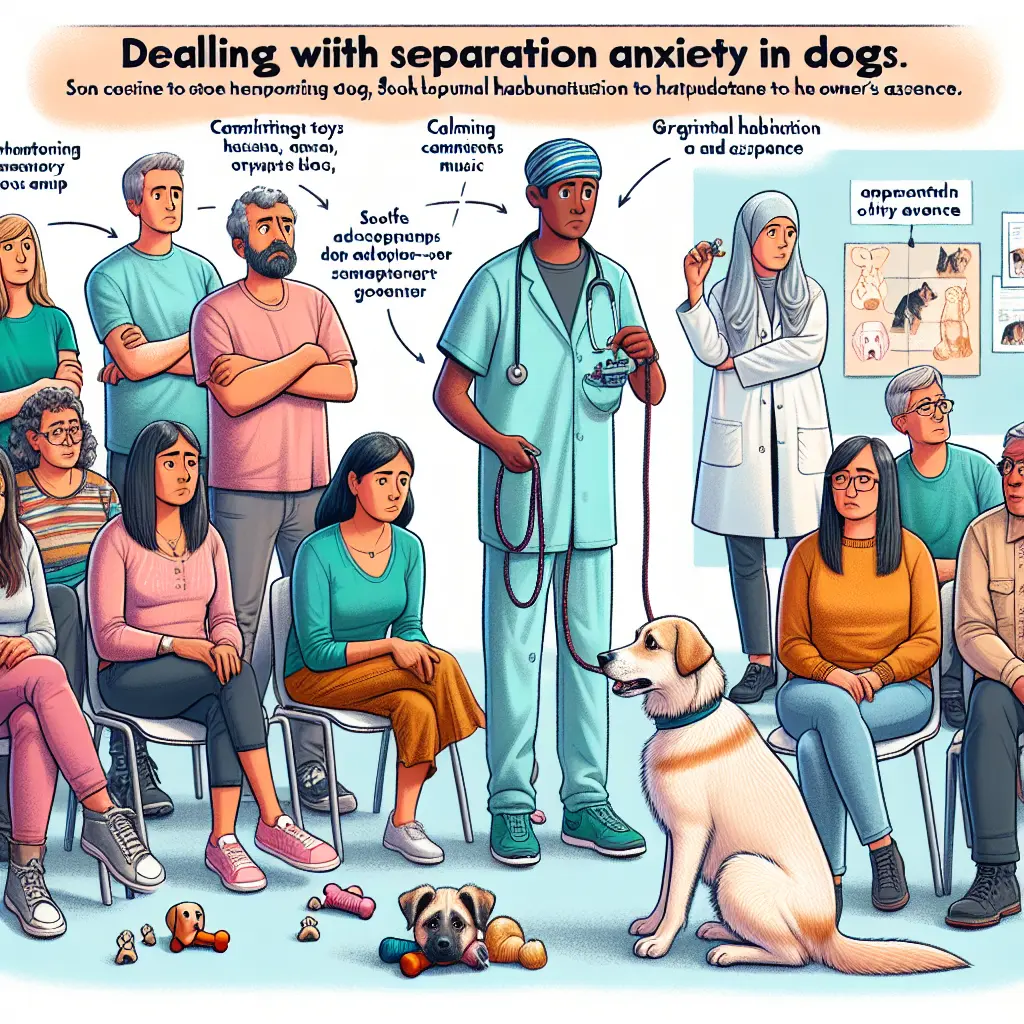Separation anxiety in dogs is a prevalent issue that many pet owners face, often manifesting through various troubling behaviors when left alone. Understanding the root causes and identifying the signs of separation anxiety are crucial steps in managing this condition effectively.
Separation anxiety in dogs can stem from several causes. As noted by experts, factors such as a lack of training, previous abandonment or changes in the family dynamics can trigger anxiety. Dogs are creatures of habit, and disruptions in their routine can also contribute to stress.
Causes and Signs of Dog Anxiety
Recognizing the signs of separation anxiety is the first step towards helping your furry friend. Common dog anxiety symptoms include excessive barking or howling, destructive behavior, pacing, restlessness, and in some cases, attempts to escape. These signs not only cause distress in dogs but can also disrupt pet-friendly environments.
The heart-wrenching story of a 17-year-old dog abandoned in Syracuse highlights the impact of abandonment on dogs. Additionally, recent changes to U.S. dog import regulations reported by the CDC have contributed to stress.
Managing Dog Anxiety: Solutions and Training
Managing dog anxiety requires a multifaceted approach. Dog training for anxiety is fundamental. Training programs designed to address anxiety often include desensitization techniques which help the dog become accustomed to being alone gradually.
Calming techniques for dogs are also vital. These can include providing a safe space like a crate where the dog feels secure, using calming playlists designed for dogs, or engaging in physical activities that tire them out before you leave.
Moreover, anxiety relief for dogs can also be achieved through various supplements and pheromone products. It's crucial to consult with a veterinarian to choose the right product for your pet’s specific needs.
Preventing separation anxiety involves integrating routines and training from an early age. Establishing a reliable routine can significantly reduce anxiety triggers in dogs. Also, socializing your dog well can prevent anxiety by ensuring they feel comfortable in various situations.
Prevention and Long-Term Care
Long-term care for anxious dogs might also involve regular check-ups with a veterinarian to adjust any dog separation anxiety treatment plans as needed.
Recent developments have had significant impacts on dog behavior and stress levels. The rising trend of pet wills reflects a growing recognition of pets as integral family members.
Understanding external factors like climate change is crucial in adapting care and preventive measures for our pets.
For more detailed information on managing separation anxiety in dogs, reputable sources such as the American Veterinary Medical Association (AVMA) offer extensive resources.
Managing separation anxiety in dogs is a commitment that requires understanding, patience, and consistent care. By recognizing the signs early and implementing effective solutions, you can greatly enhance your dog's quality of life.









Leave a Comment